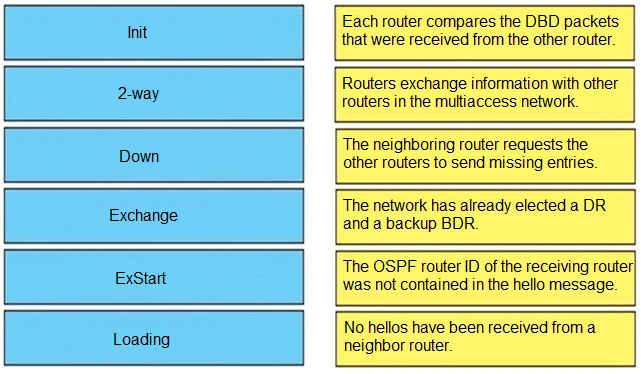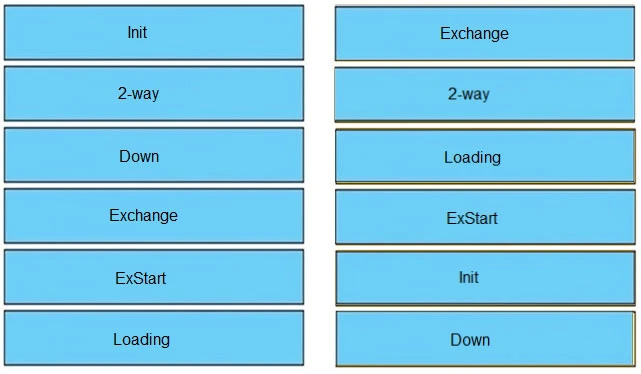What is the reason for this?
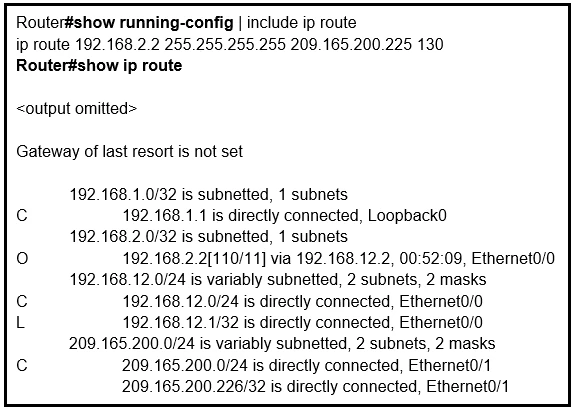

The Administrative Distance (AD) is a measure of the trustworthiness of the source of the routing information. The lower the AD, the more preferred the route. In this scenario, the static route has been configured with an AD of 130, while the OSPF protocol, which is dynamically configured, has an AD of 110. Since 110 is lower than 130, the OSPF route is preferred over the static route. This is why the different next hop is chosen.
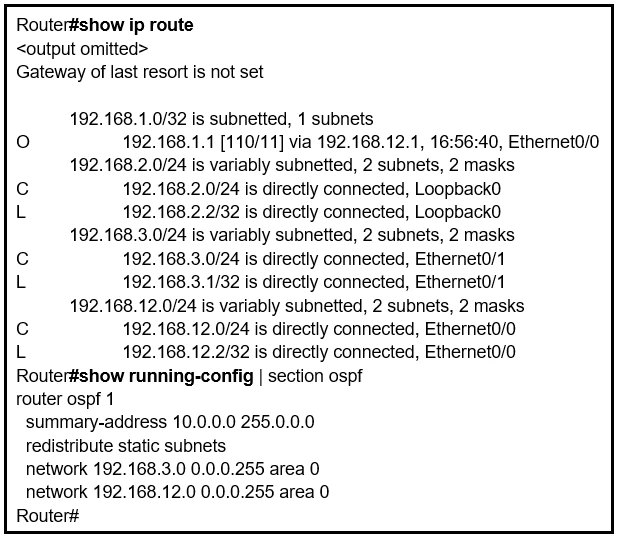
The summary route is not appearing in the routing table because there are no specific routes within the 10.0.0.0/8 network present in the routing table. OSPF generates a summary route only when there are more specific routes within the summarized range. Since there are no routes for any subnets inside 10.0.0.0/8 in the routing table, the summary route is not generated.
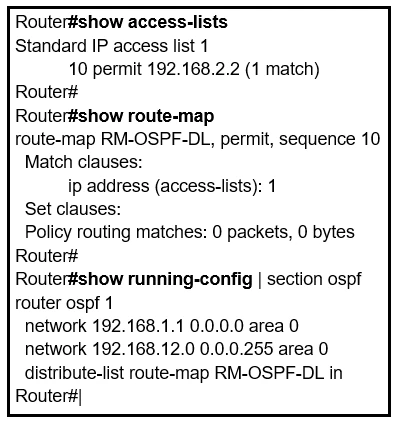
To block the route to 192.168.2.2, it is necessary to change the sequence 10 in the route-map command from permit to deny. The current configuration permits the route as it matches the specified access list and permits the route map sequence. By changing the sequence to deny, any route matching the access list (in this case, 192.168.2.2) will be denied, effectively blocking it from the routing table.
Cisco Express Forwarding (CEF) must be enabled on all participating BFD endpoints. CEF is a high-speed packet forwarding mechanism that BFD relies on to quickly detect link failures. Without CEF, BFD packets would have to be handled by the CPU, which could slow down the detection of failures. Hence, enabling CEF ensures efficient operation of BFD.
